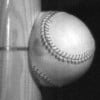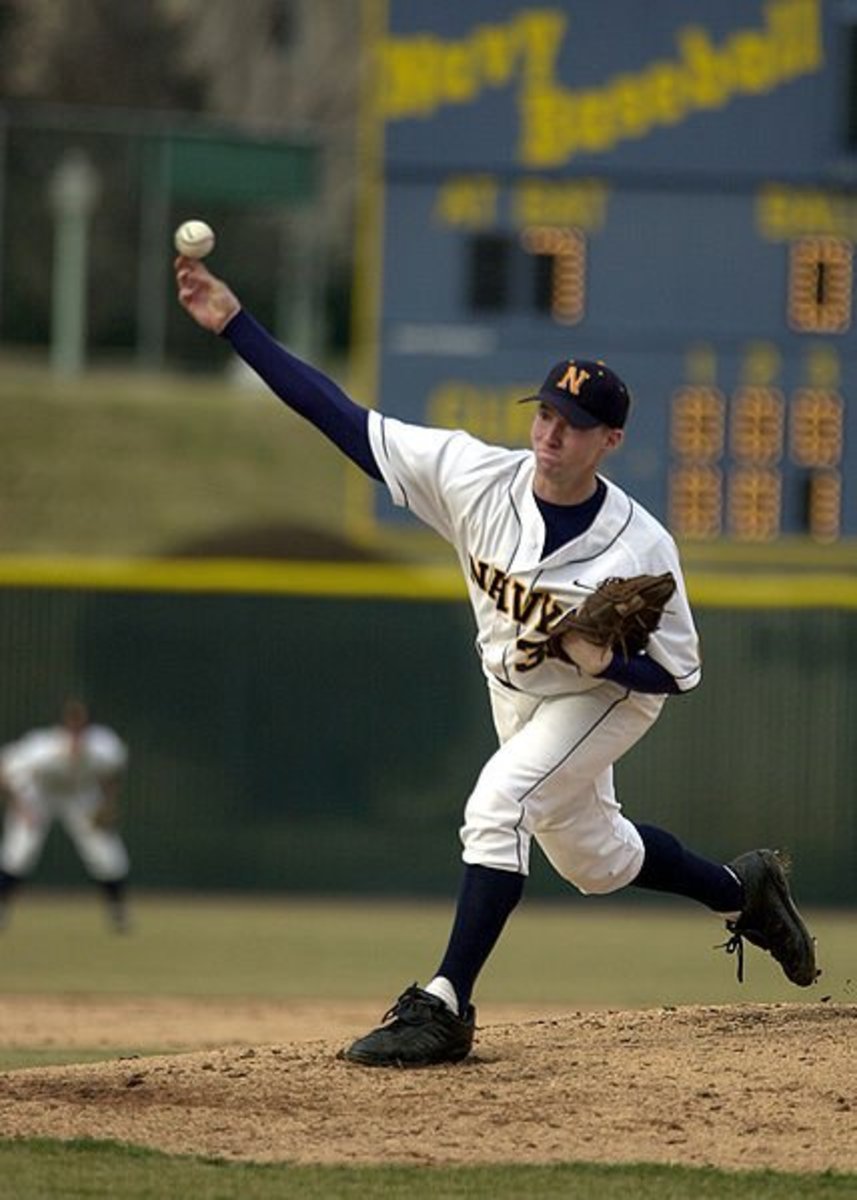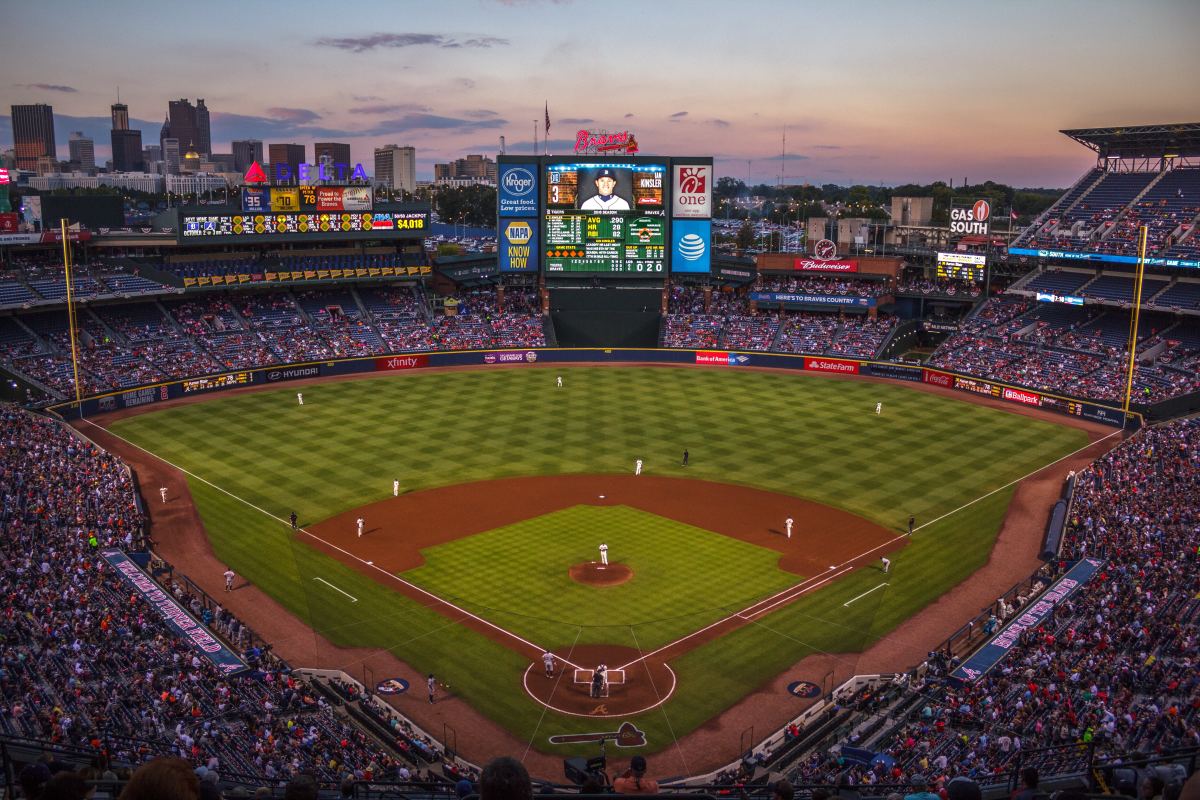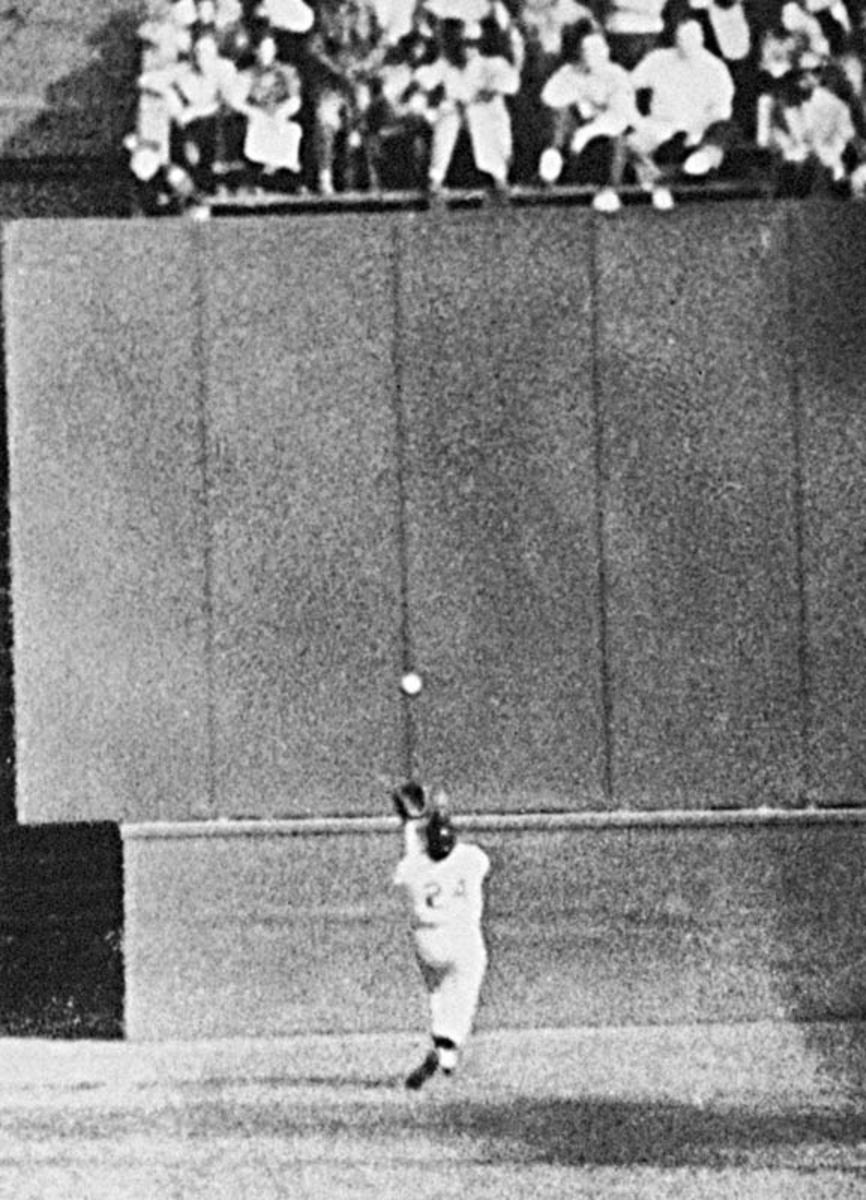Fastpitch Softball Hitting Against the Best Pitchers
How to enlist the assistance of your powerful subconscious mind at home plate
In my senior year at The University of Richmond, I was named the University's Athlete of the year after hitting .344 as the regular left fielder and posting a 6-0 pitching record. I was then drafted by the San Francisco Giants, signed a small bonus contract and played in their minor league system for a short time. After being released by the Giants, I returned home to Newport News, Virginia where I played eight years for Fox Hill, one of the premier fastpitch softball teams in the world.
At Fox Hill, I played in the same outfield with two other former professional baseball players, both of whom were far better athletes than me. Our center-fielder, Freddie Kovner, was possibly the greatest ballplayer I had ever seen. The only reason I say he was possibly the best is because our left-fielder, Stan Baker, was the only other ballplayer I had ever seen in person who may have been Freddie's equal. There was always a debate going on among the other players and coaches on our team as to who was the best, Baker or Kovner. Regardless, they were both awesome.
During my eight seasons at Fox Hill, we also had two shortstops and a third baseman who had played professional baseball. Amazingly enough, many of the players who had never played professional baseball were as good if not better than the former professional ballplayers we had, except, of course, for Baker and Kovner. Nobody was as good as those two guys.
If it had not been for some unfortunate injuries, both Baker and Kovner may have been Hall of Fame baseball players in Major League Baseball. They were that good. Anyway, I feel it important to mention how great these guys were because I normally outhit both of them when we faced the world's best pitchers. And again, I need for you to understand that these two guys were far better athletes than me. The reason I outhit them against the world's best pitchers is because I was using "inner game" secrets that they were not using.
It is these inner game secrets I am going to share with you in this instructional piece. During my first two years at Fox Hill I had numerous humiliating experiences at the plate attempting to hit against the world's best men pitchers. Unless you have actually seen world class men fastpitch softball pitchers in action, mere words simply can not do them justice. Using superlatives like "super", "amazing", "fantastic", "incredible", and "great", to describe the best pitchers really isn't quite enough. Words like "wizard", "witch", "warlock", and "sorcerer" might be more appropriate.
Pitching from only 46 feet away, the same distance as in little league baseball, the top guys were throwing it about 85 miles per hour. When you do the math and solve for the "X", 85 over 46 equals "X" over 60.5, you find that "X" equals 111.79 mph. In other words, an 85 mph fastball thrown from 46 feet away is equal to a 111.79 mph fastball thrown from 60'-6", the distance in major league baseball. The fastest pitch ever recorded in MLB is 106 mph which is disputed. The Cuban Flame thrower, Aroldis Chapman, originally with the Cincinnati Reds and later a New York Yankee, holds this impressive record. He normally throws it between 102 mph and 104 mph.
I mention this because when you are batting against the best of the best in either baseball or fastpitch softball, you had better have a plan or else you will be humiliated. At the highest level, the game is simply too fast not to have a plan and that plan had better include transferring the hitting duties over to your Higher Mind which can manipulate time and space and create the perception of slow motion for you.
In fastpitch softball, at the highest level, the best pitchers can not only throw it fast, but they all have drops and change-ups. The biggest difference between hitting against the best in baseball and the best in fastpitch softball is the fastpitch softball pitchers can all throw rise balls. The fastpitch softball pitchers are pitching off of flat ground so these rise balls are really going up. This is something a baseball hitter never sees because the baseball pitchers are throwing downhill from a pitcher's mound.
Otherwise, it all boils down to hitting a round ball squarely with a round bat. Hitting in either sport is extremely difficult. However, again, when facing the best pitching you had better have a specific plan. There are two basic plans of attack you need to use. One is your plan to be used whenever you have less than two strikes and the other is to be used whenever you have two strikes against you.
With less than two strikes: Here it is smart to look for YOUR pitch, a particular type of pitch, like a rise ball, a drop, or a changeup..pick only one and stick with it. Do not change your mind as the pitcher is winding up. When you do get the pitch you are looking for, you can maximize both your timing and power and rip the cover off the ball.
With less than two strikes: It is also crucial to look for YOUR pitch to come to a specific location in your strike zone or impact area. And, finally, with less than two strikes, know exactly how and where you are going to hit that perfect pitch when you get it. Have an exact end result in mind for that ball after you have hit it. Have the mental picture in mind of the ball compressing up against the sweet spot of your bat and exploding off of your bat at the exact trajectory you want and see the ball flying between the fielders or over the fielders for a home run or line drive base hit. See and expect only success.
Generally, after watching a pitcher for awhile, you will see which pitches he or she likes to throw in particular situations. From time to time a pitcher has a "tell", when they will unconsciously tell you which pitch they are throwing before they release the pitch.
Really study the pitchers. In MLB, for example, they keep detailed records of every pitch a pitcher throws in every game of his career. They show what type of pitch he threw and where he located the pitch on every pitch and in every possible count. A careful study normally yields some very reliable tendencies and patterns the hitter can use to successfully attack the pitcher.
Now, with two strikes against you, the smart hitter thinks precision place hitting, not power hitting at all. You will use about 75%-80% of your total power. You want a solid line drive or solid ground ball that splits the fielders. You want to use the entire field and go with the pitch.
You want to choke up, even split your hands slightly, maybe an inch or two simply to gain greater and more precise bat control. Against the really fast pitchers, you MUST look for his fastest heat on the outside of the plate at the top of your strike zone, then adjust to anything else you might get. Against the fastest pitchers, it is simply easier to make any possible adjustment from that position...Heat, outside and up.
Now that you know the basics, what are the "inner game" secrets. Mentally rehearsing perfect performances just before going to sleep at night is the single most important thing you can do. First, measure the size of your strike zone and put it on the wall in your bedroom, either using a poster board or simply draw it on your wall at the appropriate height. Simply stand beside it and really look at it every night just before you do your mental rehearsal work.
Rehearse perfect performances with less than two strikes and perfect performances with two strikes. Simply be creative here but let me go over an example so you will know how to do these mental rehearsal exercises. Let's say you will be facing a right handed pitcher who likes to throw a low rise-curve ball that curves away from a right handed hitter as it is rising. That pitcher also has a good drop and a good change up. However for this example, let's say you know he has a tendency to throw that low rise-curve until he gets his first strike on you. So, you will naturally look for YOUR pitch on his very first pitch.
Begin by taking a few deep breaths, maybe four or five, and you will begin to relax. Now, lay back on your bed or sit in a very comfortable chair, close your eyes and imagine the pitcher on the pitcher's mound. Focus your eyes on an area just to the side of his right knee where he will release the pitch. Imagine everything in slow motion at first. Don't be concerned at all with time or how long this is taking. Just imagine the ball being released from his hand. Make sure you see the ball completely out of his hand and on its way to you BEFORE you start your short and smooth stride. Your head is very still and you have both of your eyes focused on the TOP of the ball. Focus on the TOP of the ball, the North Pole of the Ball. Of course, you will naturally make contact with the center of the ball with the joy spot of your bat's barrel. But, I repeat, FOCUS BOTH OF YOUR EYES ON THE TOP OF THE BALL, beginning immediately after you see the ball come out of the pitcher's hand.
In order to be YOUR pitch, the low rise curve you will swing at, it must start out low and stay low for the first half of the distance it travels toward you. If it appears to be about belt high midway towards you, you know it will finish too high, so you TAKE that pitch. Include a few of these in your mental rehearsal work too. See yourself calmly and coolly taking a few pitches you don't want.
You also immediately notice the rise-curve spin. Also notice that the ball appears to be headed towards the inside edge of home plate during the first half of the distance it travels towards you too. Having seen this pitch before, you know it will move slightly up and away from you during the last half of the distance it is travelling towards you.
This pitch you want, YOUR pitch, will arrive close to the middle of the plate, above your knees and below your waist. This is the low rise curve that starts out low and remains low for the first half of the distance on its way to you. You have recognized and decided this as the very pitch you want and have perfectly timed your stride and swing. You have pre-planned and mentally rehearsed, many times, hitting that very pitch on a perfect 22-degree trajectory directly between the leftfielder and the centerfielder into your power alley.
Again with both of your physical eyes firmly focused on the TOP (North Pole) of the ball you see with your Mind's Eye (Your Third Eye) the center of the ball compress deeply against the perfect joy spot of the barrel of your bat. You are using only 90% of your total power to maximize your precision. At 90%, you still have plenty of home-run power. Precision is far more important. You hold onto that precision ball-bat compression image as you think about the ball exploding off your bat's barrel at that 22-degree trajectory. Then you see (visualize, imagine) the ball flying over the fence in left-centerfield for a Home Run.
Do a couple of these mental rehearsal exercises in slow motion, then a couple more in regular motion, then really speed it up to super fast motion, much faster than you could ever possibly see. Always include that image of the perfect ball-bat compression, the ball compressed into the shape of a half-moon against your bat, as well as the ideal end result you want.
It is also helpful to spend most of your mental rehearsal time working on your two strike approach because the more confident you become with two strikes, the calmer, cooler, and more confident you will become and the better you will perform with less than two strikes.
With two strikes, remember, against the best pitchers, you will begin looking for the pitcher's fastest pitch to arrive over the outer edge of home plate at the top of your strike zone. This is how you begin your mental rehearsal work, expecting that high and outside heat, to arrive either in or close to your strike zone. You must be prepared to PUSH that pitch into the opposite field.
Now, mentally rehearse getting that pitch and seeing yourself handle it perfectly by hitting a solid line drive to the push side of the field. With two strikes, you want to focus on hitting "zero-degree" line-drives between the infielders. See yourself splitting the infielders perfectly. A right handed hitter sees herself hitting perfect line drives between the first baseman and second baseman on all outside pitches, line drives between the second baseman and shortstop on pitcher over the middle third of home plate, and pulling line shots between the shortstop and third baseman on pitches over the inner third of home plate.
Remember to use 75%-80% of your total power with two strikes. Precision solid contact is what you want here. Even practice using a wider stance, placing 60% of your weight on your front foot, take no stride, and simply concentrate on hitting the ball where it is pitched. Practicing this 2-strike approach, both mentally and physically, is the key to hitting for a high average.
The more you mentally rehearse perfect performances with two strikes, the better. However, if you don't feel like spending an hour or more, and just have a few minutes, concentrate on the four corners of your strike zone. See yourself perform perfectly when you get a rise ball to each of the four corners of your strike zone, a drop to each of the four corners, and a change up to each of the four corners. So, if your time is limited, simply see yourself perform perfectly on maybe four or five pitches with less than two strikes and the 12 pitches with two strikes.
If you will simply do this just before going to sleep at night, every night for about a week, you will begin hitting the ball better than you ever have. If you do this every night for two weeks, you will start experiencing your zone which is the most exciting and productive thing any hitter can experience.
You can do your mental rehearsal exercises anytime. However, doing them just before going to sleep at night is the best time to do them because your powerful subconscious mind, which NEVER sleeps, will work on fine tuning your mind and body to perform perfectly all night long.
As you sleep, all of your body's organs are resting and require much less input from your subconscious mind. You subconscious mind's work load is reduced by about 50%. Your subconscious mind, accustomed to a much heavier work load, actually experiences what is called "stimulus hunger" because it become hungry for more information to process.
By doing your mental rehearsal work just prior to going to sleep, you are giving your powerful subconscious mind the work it craves to do. This is the hitting secret of all hitting secrets.
To the extent you are willing to work will determine just how much of your powerful subconscious mind will help you during actual games. The more subconscious mind you use, the better you will perform. This is the magic key to hitting success. It's all up to you.
As you know, your Higher Mind, some call it The Father Within, is the best hitter in the Universe. This mental work leads to your allowing Your Higher Mind to handle the task of hitting for you once you are in the batter's box. This is when you experience your ZONE Consciousness or your ability to "slow down" the action while physically responding with razor like precision. It's the ultimate hitting experience.





